Food Preservation: How to get free fruit when you don’t have land
There is free fruit available where ever fruit trees and berry bushes grow, in the wild and in a community near you.
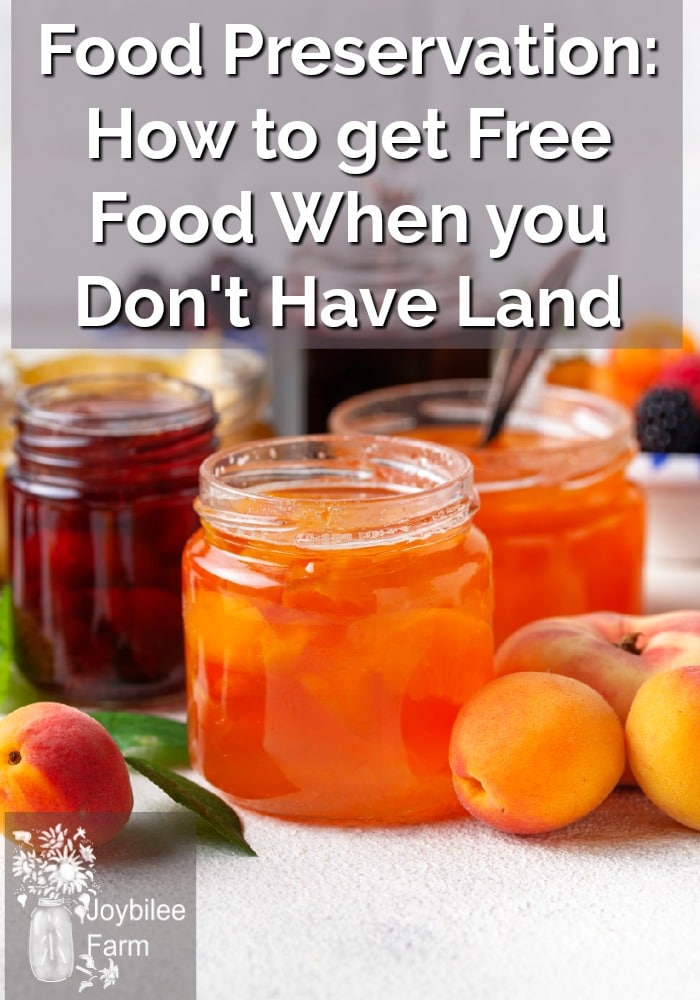
While you can buy boxes of fruit in most places in Canada and the US, there is free fruit available where ever fruit trees and berry bushes can grow, in the wild and in a community near you.
Gathering Free Fruit in the Wild
Saskatoons, thimbleberries, blackberries, huckleberries, wild raspberries, haws, damsons, Oregon grapes, elderberries, and chokecherries are some of the free fruit that I have harvested from the wild. Some of these aren’t choice. Some wild fruit, like saskatoons, needs to be cooked to become deliciously palatable. Chokecherries and haws benefit from jamming.
If you live in an area that was once a thriving mining location – most of BC, and the West Coast of North American, for instance, — you will find derelict apple trees by the roadside with small, free fruit — these are the perfect specimens for apple jellies, apple cider and pectin. Invest in an apple sauce/tomato sauce mill and you will be able to turn boxes of small, misshapen fruit into delicious sauces, fruit dishes, and jellies for winter eating.
Put buckets in your car or get a collapsible cloth bucket for your backpack and take advantage of these free fruit. Don’t pick on private land without the landowner’s permission. Avoid picking on the edges of busy highways — they are often sprayed for weeds and the emissions from heavy traffic will taint the fruit. Aim for quiet country roads and byways to find the treasure of free fruit.
When you find it, take it home and make jam, juice or jelly to preserve the summer goodness. A one-gallon bucket holds 4 to 5 lbs of fruit — enough for a jam-making session. Wild fruits are rich in antioxidants, vitamins and minerals and add variety to the self sufficient diet. And they are free for the investment of a few minutes in nature.
Watch for bees, wasps and bears that also like wild fruit. Make a lot of noise to alert bears that you are there and be prepared to leave the area if the bear was there first.
Gleaning fruit on private land
In my area, there are fruit trees that litter the ground with fallen fruit. The landowners don’t want to be bothered with harvesting, or due to physical limitations or time restraints, can’t harvest the trees. Most full size fruit trees produce more fruit than a small family can deal with. Fallen fruit is wasted. It attracts wasps and bears, which endanger people and damage property. Be brave. Knock on the door and ask if you can help. Frame your request in words that let the landowner know how you are able to help them deal with the nuisance of falling fruit. And then offer to share the bounty with the landowner.
It’s a win-win situation. For the investment of a couple of hours of your time — you clean up a dangerous situation for the landowner, harvest the tree and give a box or two of the fruit back to the landowner. Anything from one box to half the fruit is a reasonable payment to the landowner for the privilege of picking the fruit. If a landowner offers you less than half the crop for your labour, consider negotiating or looking for another tree.
When granted permission to pick, always leave the property in better condition than you found it. Bring your own boxes and buckets for fruit picking. Bring ladders, if you can, to help you do a better job. Work at it like it’s a paid job and be diligent. Treat the tree with respect as you pick — many trees, like apples, fruit on new spurs, so be careful not to break off parts of the tree while you pick. Rake up the ground and deal with fallen fruit, broken branches and fallen leaves and you will be invited back year after year.
Word gets around in a community when there is a family willing to pick fruit and use it. Most people don’t want to see their fruit wasted. So don’t be surprised if you get more offers of fruit than you can deal with. This week we were offered apricots from one tree and transparent apples at another location. We have wild saskatoons to pick on our own land as well.
Fruit growing on derelict, neglected trees are usually smaller than store-bought, and often blemished. The trees haven’t been thinned or pruned like commercial fruit trees. But it most likely is organic. Ask before you pick if the tree or the fruit has been sprayed with anything. If you are going to invest your time you will want to make sure that the fruit is organic.
What to do with free fruit
Larger fruit can be dried. You don’t need to peel it, just cut in half or quarters, remove any seeds, inner core or pit. Cut off any wormy or bad spots and lay on trays in your dehydrator (or on a baking sheet in a cool oven).
Small fruit can be jammed or put through an apple sauce mill. There are delicious salsas, jams and chutney recipes in some of the books I’ve been recommending. Can them in a boiling water bath they will add variety to your meals all winter.
We picked about 80 lbs of transparent apples on Monday. The tree was a standard size apple tree with probably 500 lbs of fruit ready for picking. We were one of several families that were offered fruit from the tree. Although the tree had been thinned, the apples were plentiful and small. I will be making apple sauce, pectin, dried apples and fruit leather from these apples over the next few days. I’ll start with the apple sauce since my dehydrator is full of 30 lbs of apricots that were gleaned from another tree on Sunday.
Gleaning from Commercial Orchards
Never help yourself to fruit on private land without contacting the landowner for permission. This is a felony in some states. Fruit growing on trees on private land is someone’s property. But in these tough economic times, commercial growers aren’t getting a decent price for their crops. That means that they can’t afford to pay pickers the going rate and in many seasons the fruit is left to rot on the tree. Watch the local orchards. If you see tree fruit on the ground and few pickers in the trees, consider offering to help with the picking for a day in exchange for a portion of the fruit.
Don’t be offended if the orchardist declines your offer, though. We have been turned down due to the liability fears of orchardists. But others have jumped at the chance to help a neighbour and have some of their crop harvested for “free”. If you have extra time to invest once your own family’s needs are met, consider partnering with a “gleaners” charity in your area.
Work-for-food labour exchanges — Bartering
Because of the high cost of labour, many small commercial farms are glad to exchange food for labour. If your family has extra time, consider offering to help a small organic farm with weeding or harvesting in exchange for food. The payout is smaller than gleaning on noncommercial land — usually food equivalent to the value of your labour. But the food is prime and there may be culled food or over-production that comes your way as well.
Again treat it like a serious exchange of labour for product and work diligently. You will establish a reputation in the community and other farmers will invite your help, as word gets around, that you will work for food. Be prepared to turn down work when your own needs are met — your food storage is full for the winter.
Have you found a way to get food for free in your area? Was it a good experience or a bad experience? Tell your story in the comments section.
Some necessary tools to help you preserve the summer’s gleanings:
Victorio VKP250 Model 250 Food Strainer and Sauce Maker
Norpro “The Original” Sauce Master
Columbian Home 0707-1 Granite Ware 21-1/2-Quart Steel/Porcelain Water-Bath Canner with Rack


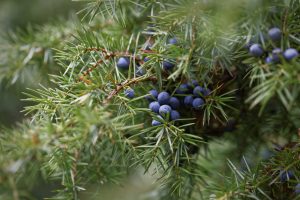
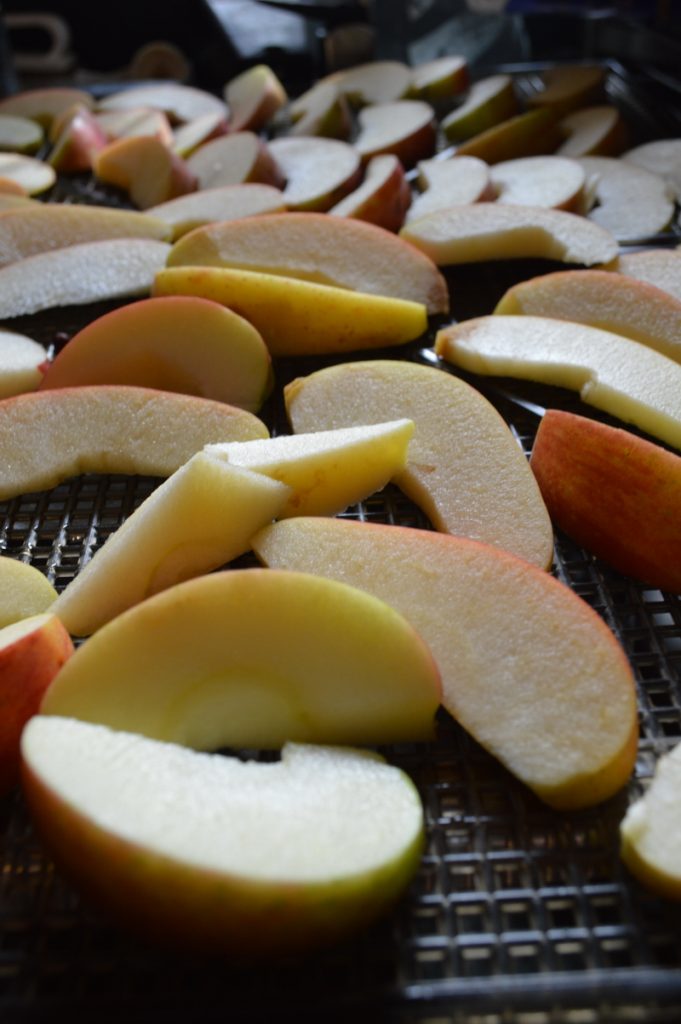
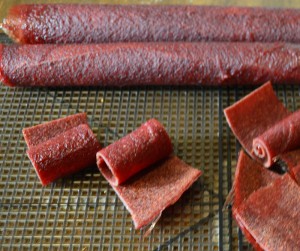
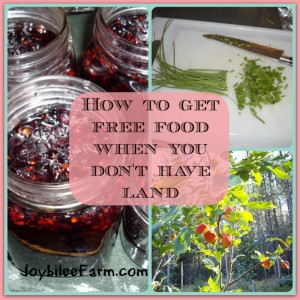

Leave a Reply